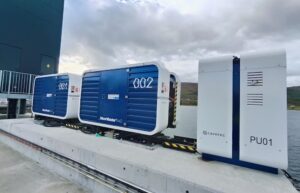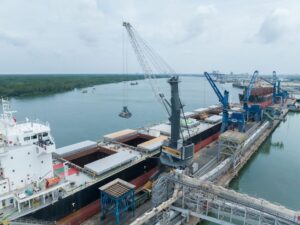New orders for alternative-fuelled ships are defying the overall decline in newbuild activity, highlighting the industry’s accelerating commitment to decarbonization. According to DNV’s Alternative Fuels Insight (AFI) platform, 19.8 million gross tonnes (GT) of alternative-fuelled vessels were ordered in the first half of 2025 — a remarkable 78% increase compared to 2024.
A total of 151 alternative-fuelled ships were ordered between January and June, slightly fewer than the 179 vessels ordered in the same period last year. However, the sharp rise in total tonnage underscores a strategic focus on larger, more advanced vessels, particularly in the container segment, which accounted for 13.6 million GT across 81 ships.
“This is not just driven by first movers anymore,” said Knut Ørbeck-Nilssen, CEO Maritime at DNV. “A broader wave of owners is integrating alternative fuels as part of core business strategies, signaling that decarbonization has become a mainstream priority.”
LNG remains the leading choice, with 87 vessels (14.2 million GT) ordered so far in 2025. Methanol is gaining momentum as well, with 40 vessels (4.6 million GT) across diverse segments, including container ships, tankers, and RoPax vessels. Although still niche, ammonia and hydrogen continue to attract attention, with three ammonia-fuelled vessels (37,000 GT) and four hydrogen-powered vessels (114,000 GT) joining the orderbook.
Jason Stefanatos, Global Decarbonization Director at DNV, noted: “Shipowners are recalibrating investments to balance compliance, fuel flexibility, and long-term strategy. Upcoming IMO regulations will only accelerate this shift.”
Supporting infrastructure is keeping pace. Thirteen LNG bunkering vessels were ordered in early 2025, ensuring that fuel supply chains evolve alongside fleet investments.
The data underscores a pivotal transition: alternative fuels are moving from niche to norm, even amid a challenging newbuild market.






